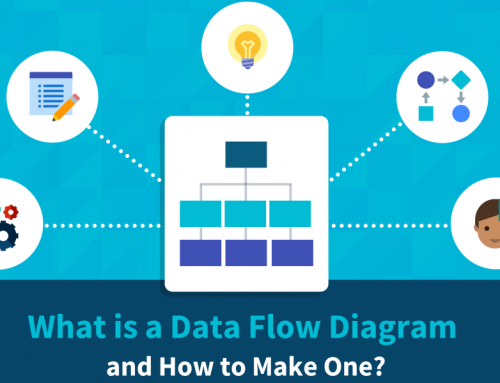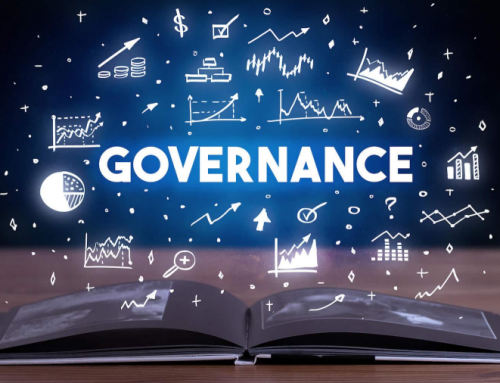8 Principles of Data Governance
As with anything else, data governance still requires principles. Before implementing, any organization should identify the underlying principles that underpin its approach to data governance. The general rules of principles also apply to data governance, and their number should be limited but fixed. However, every major decision made on the road to data governance should be measured against whether it supports or undermines the principles established. In this article, we’ll introduce 8 principles of data governance.

Principles of Data Governance
There are eight basic principles that need to be followed for data governance to ensure success:
Principles of Data Governance – 1. Data governance should be business-led.
“Unfortunately, it is very common for data governance projects to fail. One of the biggest reasons for failure is that data governance activities are driven by IT without strong business support.”
A common misconception is that IT should lead data governance. Frankly, this is wrong.
Data in an organization is created and managed by business people, and bad data primarily affects business people. Data supports business decisions. If these decisions go wrong, the impact will be on the business, not IT. Therefore, the business should lead data governance, and while IT should indeed be involved, they should not be in the lead.
Principles of Data Governance – 2. Data governance is a partnership.
“Business and IT share ownership and responsibility for protecting and enhancing organizational data.”
From the above point of view, companies cannot go it alone. For business units to collect and analyze data, the involvement of IT is absolutely necessary. Additionally, most data processing runs on IT-owned technology systems. Additionally, if data governance efforts are looking for the right tools and methodologies, then tools will also need to be purchased.
Therefore, a data governance project should be a closely synergistic and cooperative relationship between business and IT.
Principles of Data Governance – 3. Data governance is more about people and processes, not IT applications.
“At the tool point, we should understand that you shouldn’t have to buy data governance tools just because you’re doing it.” Tools exist to improve what you are doing. If you haven’t done formal data governance, or if you’re not doing it well, it’s a waste of time to find a tool to help you do it. This runs counter to the typical IT philosophy of getting the tools first.
“It’s notoriously stupid.” – Data Governance, John Ladley, Esevier, 2012.
A common solution for data governance as a first step is to implement a “data governance tool“. However, the most important elements of data governance involve policies, people and processes. None of this is possible for the application to implement automatically.
Some data management tasks can be simplified by the application, such as creating data dictionaries, discovering and fixing data quality issues, and obtaining information on historical data changes, but this is not data governance.
Some vendors may naturally describe their tools as everything they need for data governance. This is wrong. Please don’t believe them.
Principles of Data Governance – 4. Data governance is more about implementation than monitoring.
“However, for some reason, most people seem to associate data governance with a monitoring function that conjures all sorts of associations: data management, inflexibility, slow change, etc. However, an often overlooked aspect of data governance is that it must also function as an enabling function.”
The word “governance” means “police with a stick” to some. Many organizations see this as the way to achieve data governance. In my opinion, this is far from the truth. Governance should be about enabling organizations to succeed with data and as an enabler for a better information world, not be part of evaluating organizational data and blaming the organization.
When implementing data governance, emphasizing that data governance is a positive force makes everyone face it with a relaxed mind.
Principles of Data Governance – 5. Data governance must fit with the culture of the organization.
“Less than 10% of organizations are able to succeed on their first attempt at data governance due to cultural barriers and lack of high-level support.”
Since data governance is primarily about people and processes, a key consideration is the culture of the organization. Many consulting firms have a set of “proven and standard data governance frameworks” that they strive to sell to any organization willing to embrace them.
In my opinion, this misses the point of the problem. A governance framework that works for international banks may not work for local retailers. Likewise, a highly federated organization should have a very different data governance framework than a highly centralized organization. A data governance framework must fit the organization, and since every organization is different, each data governance implementation should have a different approach and path.
Principles of Data Governance – 6. Data governance must be integrated into the organization.
“If a data governance framework is not built into your organization, you are unlikely to achieve long-term change.”
Data governance should not be just a departmental responsibility, it should be the role of everyone in the organization because everyone creates, touches, manages or uses data.
This means that everyone has to understand data governance, understand data governance, and when it comes to their use of data, real-time data governance is required.
Principles of Data Governance – 7. Data governance requires authority.
“Not surprisingly, at the top of the data governance pyramid is the data governance steering committee. I say ‘not surprising’ because any program with the scale and potential impact of data governance requires executive support and a well-defined reporting path.”
Data governance requires organizations to consider how data is used and manipulated, and possibly changing approaches to both. Changes of this magnitude require the support of the entire organization. This means that data governance implementations need to convince not only the enthusiasts, but also the skeptics, the spectators, the clumsy, and the stubborn. Data governance implementation will encounter great resistance.
Data governance practitioners must be both data experts and salespeople. However, even the best salespeople have a committed budget, a route to escalation, and a mechanism for executive buy-in if all else fails. Data governance is difficult to achieve without the initiation of an organization’s enthusiastic decision-makers.
Principles of Data Governance – 8. Don’t waste your time doing repetitive work.
“Diligence is a good thing, but keeping things simple is more relaxing.”
If an organization is already doing data governance, don’t stop them even if they don’t call it that. In any organization, there will almost always be data-conscious individuals who will do everything in their power to manage the information entrusted to them. Don’t stop those who have taken the time to proactively create data governance.
Build on what they have already achieved, respect them, help them, learn from them, and work with them for the good of the company.
There are some important principles that are critical to establishing data governance within an organization that cannot be overemphasized. If in doubt, please refer to the principles. If a particular data governance task does not conform to these principles, then the organization needs to think very carefully about why it is doing so. Data governance is a great thing. It should spark a shift in information within any organization, leading to better decisions, less work, higher profits and efficiency, and easier access to data for all.
Conclusion
Thank you for reading our article and we hope it can help you to have a better understanding of the principles of data governance. If you want to learn more about data governance, we would like to advise you to visit Gudu SQLFlow for more information.
As one of the best data lineage tools available on the market today, Gudu SQLFlow can not only analyze SQL script files, obtain data lineage, and perform visual display, but also allow users to provide data lineage in CSV format and perform visual display. (Published by Ryan on Jul 9, 2022)
If you enjoy reading this, then, please explore our other articles below:



